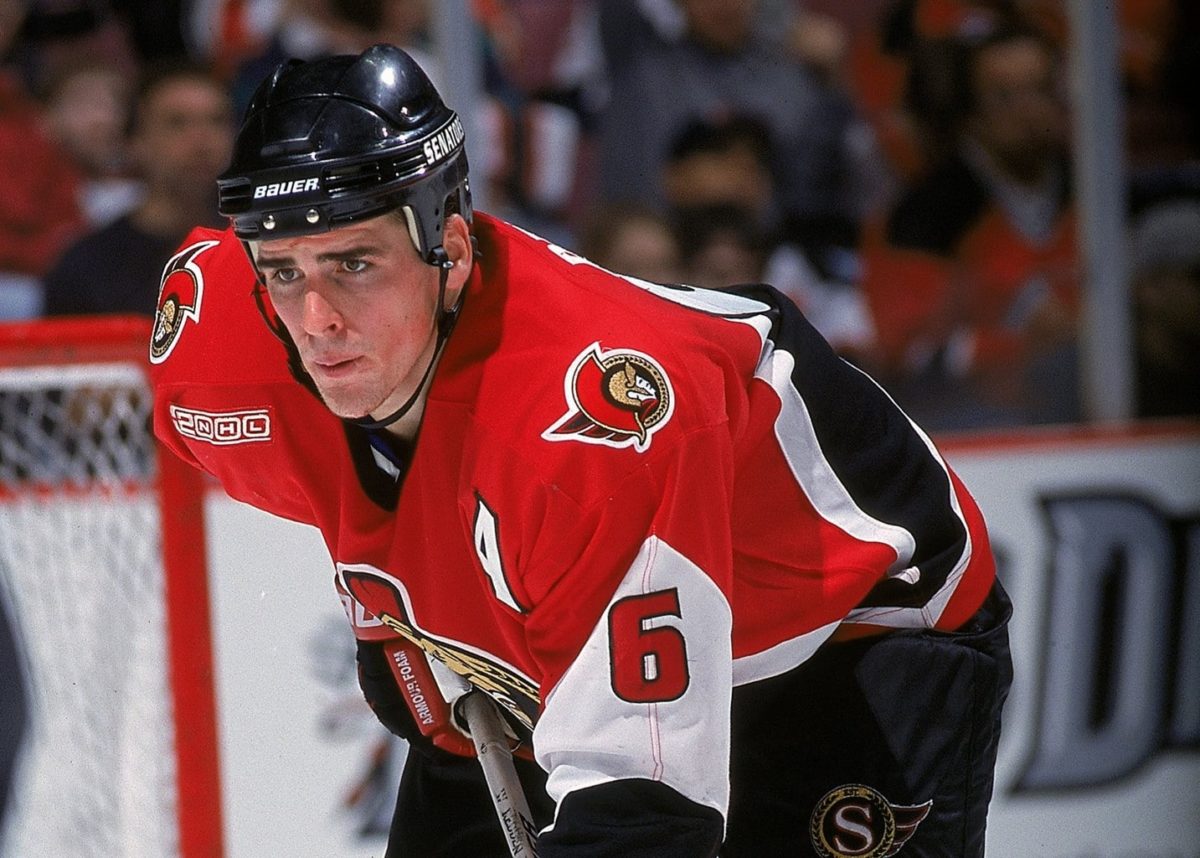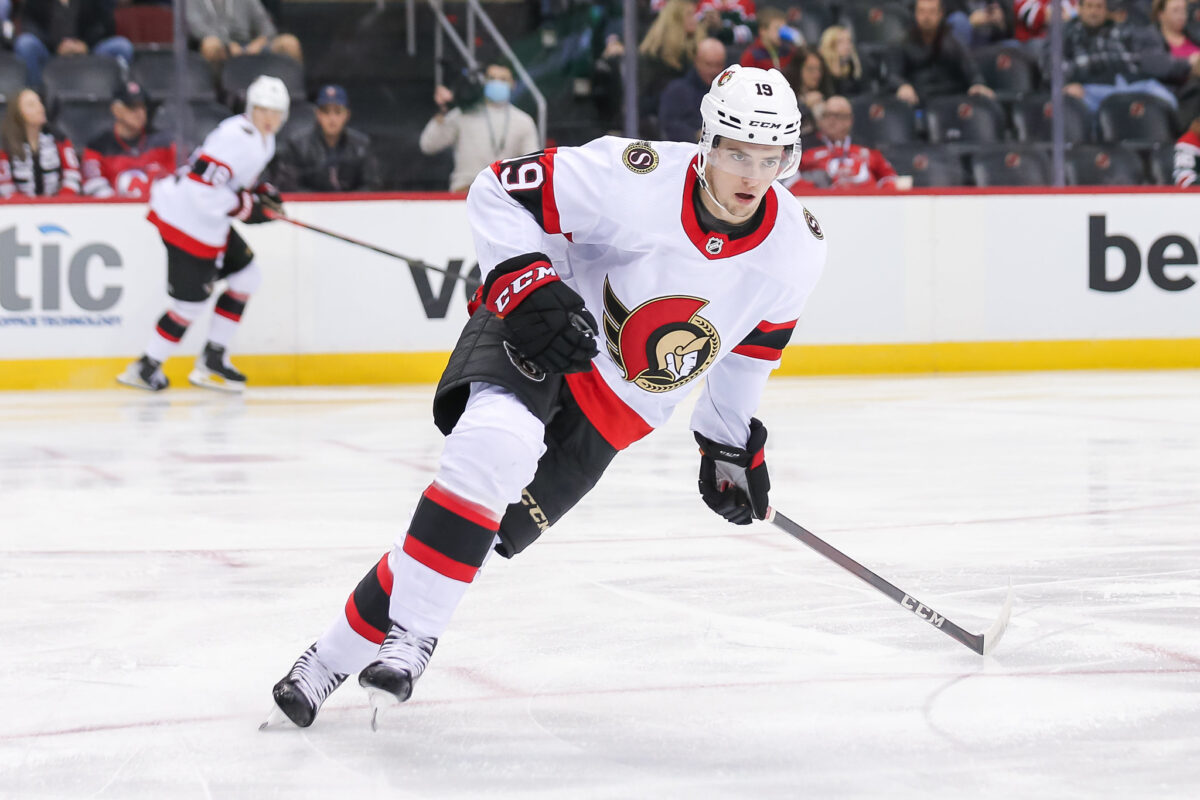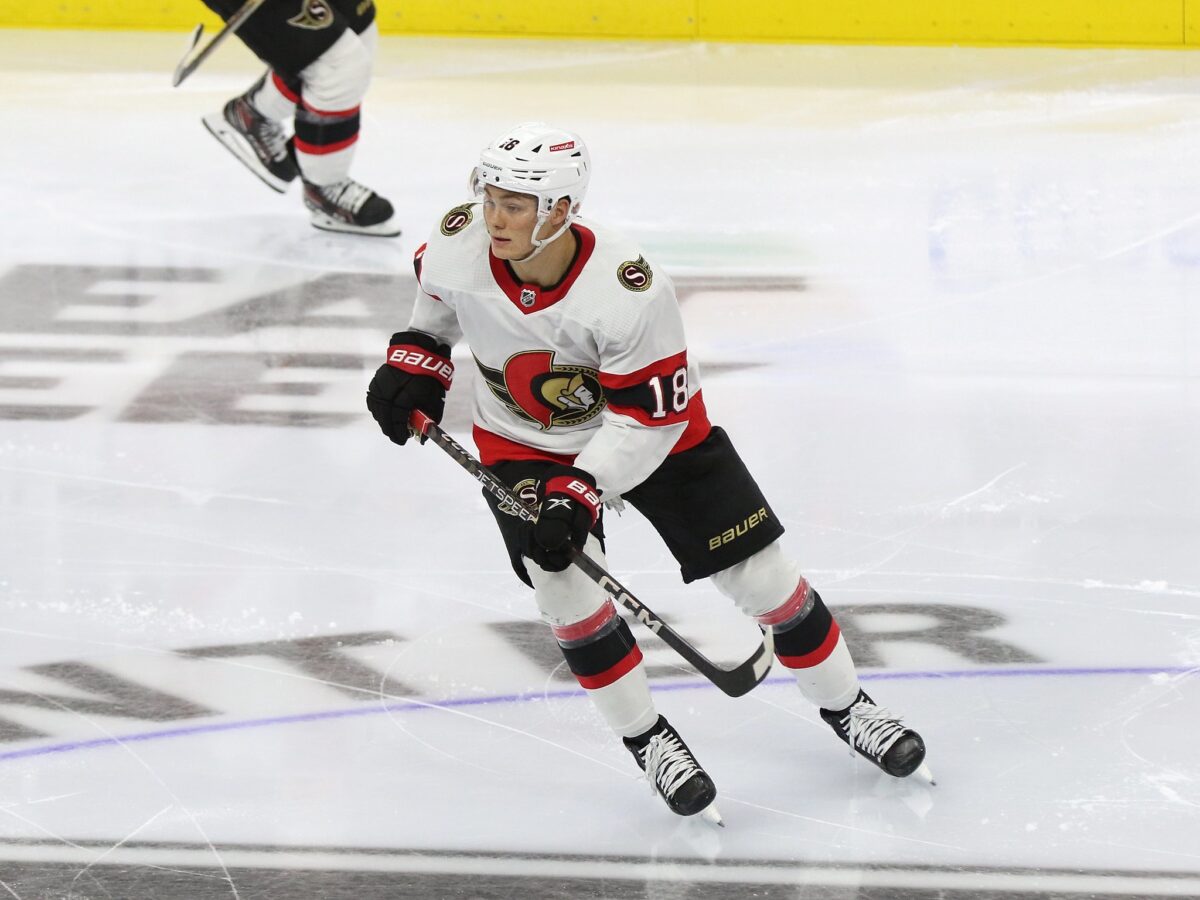Whether the Ottawa Senators are headed to the power play or penalty kill, there should be a high level of confidence for anybody watching. The Senators’ special teams have been fantastic so far in the 2022-23 NHL season, and while the season is just shy of halfway over, the team is on pace to put up some numbers that will challenge the franchise’s top seasons.
This season, the league is averaging 3.25 power-play opportunities per game, which is the highest that number has been in nearly a decade. Not only are the opportunities higher, but, as it sits right now, the power plays league-wide are averaging a 22.54 percent success rate, which topples any season over the past 40 years. The last season with a higher average power-play percentage, and therefore a lower penalty-kill percentage, was the 1982-83 season.
Before the season began, head coach DJ Smith joined Elliotte Friedman and Jeff Marek on the 32 Thoughts podcast, and Smith was asked by the hosts what a team goal for the Senators will be for this season. He started off by saying it is always a goal to get to the playoffs, but a playoff berth this season was not the benchmark for success. Instead, he brought up the special teams, and stated that a successful year would be a combined power play and penalty kill percentage of 108 percent.
As of today (Jan. 7), the Senators sit with a combined percentage of 110.1 through 38 games. When Smith made this claim, people thought he might have had hopes a bit too high, as the team has a combined special teams percentage of 99.6 last season, and an 8.4 percent jump is quite a lot for a one-season turn around. For anybody that doubted the Senators’ ability to hit 108 percent, including myself, we were proven very wrong.
Senators Special Teams History
Before diving into how things are going this season, let’s have a look at what the Senators’ special teams have looked like over their 30 years in the NHL.
The Senators’ best season on the power play came back in the 2003-04 season, when they had players such as Marian Hossa (14), Martin Havlat (13) and Wade Redden (12) leading the way with the most power-play goals, and had four other players score five or more. During this season, the Senators had 370 power-play opportunities, which is well above the 309 the Senators are on pace for this year. The team’s 21.6 percent was good enough for the best power play in the league, totaling 80 power-play goals.

Though it was their best season by percentage, this doesn’t even come close to the 2005-06 season, when the Senators scored 102 power-play goals, which earned them a tie for second place in the NHL, five behind the Toronto Maple Leafs. Not only was this the Senators’ highest power-play goal total, it is also the 13th-highest total in NHL history, and they are one of only 19 teams to eclipse the 100-goal mark.
In terms of the penalty kill, their best season came in the shortened 2012-13 season, where they finished with an 88 percent success rate when down a man, which is the eighth-best total in NHL history. Most of the Senators’ seasons come in over the 80 percent mark, which is typically looked at as a success. Their penalty kill throughout history has almost always been hovering around league average, but there are definitely a couple of outlier seasons.
Dissecting the Power Play
In the offseason, the Senators added both Alex DeBrincat and Claude Giroux, which have both turned out to be fantastic moves, especially for the power play. Before the season began, there were a number of arguments on who should be on the top power-play unit, as they had one too many players deserving to be there. Thomas Chabot on the blue line and Brady Tkachuk in front of the net were all but guaranteed to be a part of the unit, and Tim Stutzle was likely to be given a spot. That left Drake Batherson, Josh Norris, DeBrincat and Giroux to battle it out to earn the final two spots, and there was a very good argument for each of them.
Whether it was the chemistry between Tkachuk, Norris and Batherson that developed last season, the debate between which elite shot they should have between Norris and DeBrincat, or having the offense veteran join the unit for Giroux’s argument, they are all incredibly convincing reasons for each player to be on the top unit. The decision was narrowed down a little bit when Norris suffered a long-term shoulder injury early in the season, though it may make things difficult to decide when he returns.
Related: 3 Senators Who Must Step Up In 2023
Having too many offensive producers for one five-man unit is a great problem to have. For the majority of the season so far, the Senators have gone with Tkachuk, DeBrincat, Stutzle, Batherson and Chabot on the top unit, leaving Giroux out for the second group. We have seen Giroux spend time with the top unit, but most of his time is spent on the second unit with Jake Sanderson, Shane Pinto, and a few different players rotating in and out for the fourth and fifth spot.

Batherson leads the way with 10 power-play goals, with everybody else on the top unit having five each. Thirty goals from your top unit in less than half of a season is an incredible number. With the additional 10 from the second unit, the Senators sit with 40 power-play goals, which is second in the NHL, only trailing the Edmonton Oilers, who lead the NHL with 46. Along with having a very high goal total, the Senators’ power play currently (Jan. 7) sits at 28 percent, which is third in the NHL, and ranks 13th in NHL history.
While I don’t imagine the Senators will keep up this pace over 82 games, it isn’t crazy to think that they can stay competitive with the top teams on the power play. If they can stay above the 26 percent mark, that is a ginormous success.
Looking at the Reliable Penalty Kill
Being able to kill penalties is just as important as being able to take advantage of a power play. Referees like to manage games by keeping the penalties relatively even, but the Senators, despite a lot of key penalty killers moving on in the offseason, have settled in very nicely.
Players missing from last season’s penalty kill include Nick Paul, Connor Brown and Alex Formenton, who remained unsigned past the Dec. 1 deadline. These were the Senators’ go-to guys, and things look completely different this year. Tyler Motte, Parker Kelly, Mathieu Joseph and Austin Watson have been getting the majority of the shorthanded minutes for forwards, and Artem Zub, Travis Hamonic, Nick Holden and Sanderson are getting the defensive minutes on the penalty kill. As of late, Stutzle has been getting significant penalty kill time, too.
The Senators’ penalty kill has a very aggressive style. They end up with a lot of chance out of it, and keep pressure on the puck-carrier, causing lots of mistakes. Especially when Stutzle is on the ice, he has the ability to carry the puck with confidence and kill off the clock, making him one of the most valuable penalty killers.

Over the past 13 games, the Senators have only allowed two power-play goals against, killing off 38 of their opponents last 40 power plays, over a one-month span. Having a penalty killing percentage of 95 over a month is incredible, and they are showing no signs of stopping. With Norris, Joseph and Motte all injured, and contributing players on the team”s penalty kill, it will be interesting to see if DJ Smith elects to change things up and add them to the mix, or keep things how they are.
Keys to Staying Effective
For the Senators’ special teams to stay as effective as they have been, the easy answer would be to just keep doing what they have been doing.
As I just mentioned, taking into account the fact that they will be getting a number of healthy bodies back over the coming weeks, it will hand the coaching staff numerous tough decisions. Whether you are looking at adding Motte back to the penalty kill, or adding Norris and Joseph to both the penalty kill and power play, it will be difficult to make any changes to the special teams that have been working so incredibly well lately.
That being said, it is also a no-brainer to slot them all back into their spots. Joseph will slide in on the second power-play unit, with Norris likely joining him there until there is a reason to shake up the top power-play unit. Motte is excellent when on the penalty kill, too, so he will take his spot back as well.
For a team that started the year off on the wrong foot, especially in November, they have managed to keep their special teams numbers among the best in the NHL, and it has been no coincidence. The Senators have been doing an excellent job in these departments.